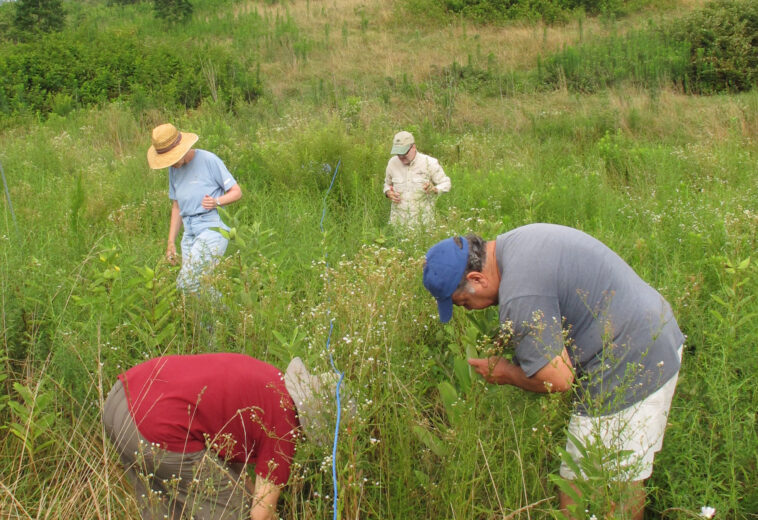Article:
PICTURED ABOVE: Beach homes in popular Outer Banks vacation spot, Avon, NC. Photo by stock.adobe.com – Kyle.
Beach Fun Back in the Day: NC Seaside Vacations a Century Ago.
BY ERIC MEDLIN
This summer, millions of people are taking at least one trip to visit the beaches of North Carolina. These visitors come from all 50 states and dozens of countries around the world. They will stay at hotels and campgrounds, sample regional cuisine and enjoy miles of sand and surf at the Outer Banks and other North Carolina beaches.
They are, of course, not the first people to enjoy a North Carolina beach trip. North Carolinians and others have been vacationing at the state’s beaches for over 200 years. According to historian David Stick, the first coastal trips for recreation occurred as early as the 1750s, with Beaufort becoming a regular tourist destination by 1800. The first North Carolina community founded specifically as a beach resort was Nags Head in the 1830s. While Nags Head was popular during the summers, it mostly attracted visitors from the Albemarle region in its early years because it was relatively difficult to reach.
About a hundred years ago, however, the North Carolina beach trip began to assume a form we would recognize today. Many of those trips focused on the sand and the surf. Travelers would spend several hours riding a train line like the North Carolina Railroad to Wilmington, Morehead City or another coastal hub, often taking a ferry to their final destination on a barrier island.
Beach trips a hundred years ago were more restrictive, challenging and time-consuming than they are today. But as a means to enjoy natural beauty and a weekend of fun, a trip to the beach has not changed all that much.
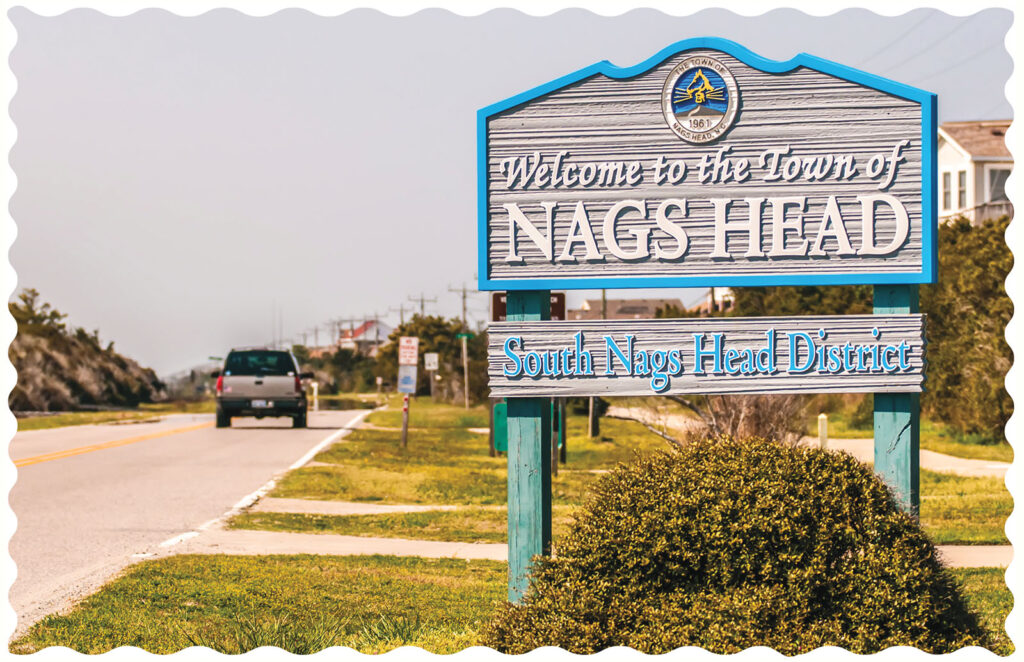
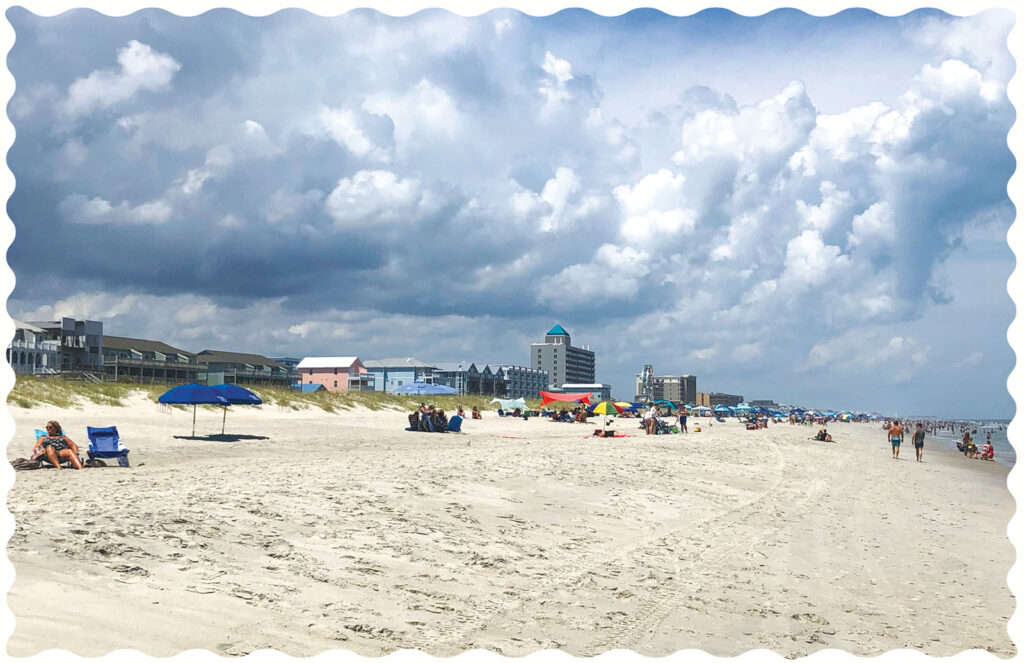
Beach Clothing
Once at the water, what did beachgoers wear a century ago? The bikini would not be invented until 1946. According to the Fashion History Timeline, a Fashion Institute of Technology resource, women wore head-to-toe flannel bathing dresses during the Victorian period, but by the turn of the century, fashions were beginning to change. Most women’s bathing suits of the 1910s and 1920s were one-piece swimsuits with hemlines that shortened as the years went on.
The Maryland Center for History and Culture writes that men in this part of America wore shorts and a top—at first modest, with sleeves, but later sleeveless, like a tank top. People changed their clothes in bath houses, which were the only structures built directly on some barrier islands.
Surfing
Lounging on the beach and walking up and down the sand were as popular a century ago as they are today. But starting in the early 20th century, beachgoers gradually began to surf. Surfing originated in Polynesia centuries ago as a recreational activity with religious components. It began to cross into American culture in the 19th century after American contact with Hawaiians.
After several decades, the slow process of surfing’s cultural drift reached North Carolina. Surfboards could be found on state beaches as early as 1907, and a famous demonstration of surfing occurred in 1928. This activity was for many years purely recreational, using surfboards made of local woods. The first regular professional surfing competitions did not occur in North Carolina until the 1960s.
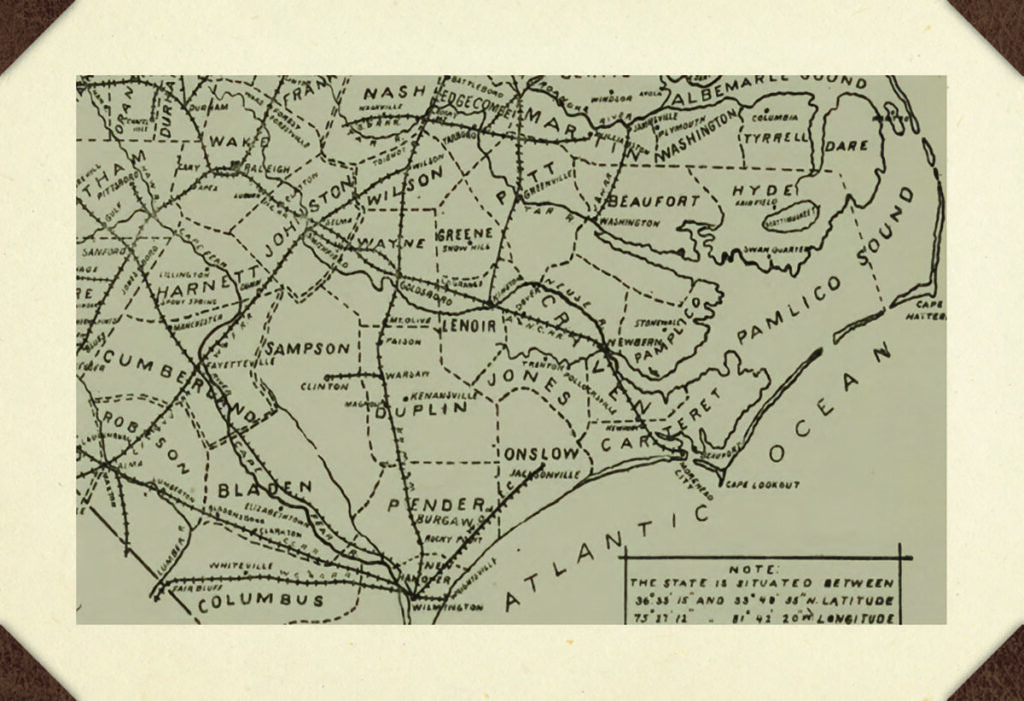
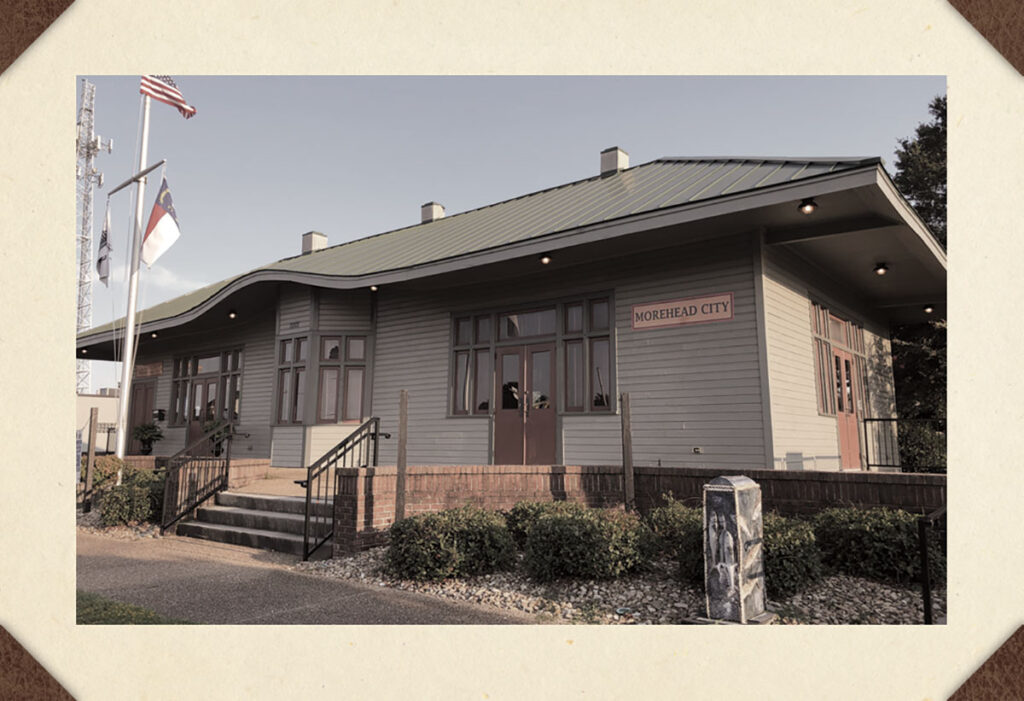

Bird Hunting
Coastal visitors could participate in a number of other activities besides swimming and surfing. Many visited boardwalks and early amusement parks in beach towns. But some chose a more isolated coastal hobby: bird hunting. North Carolina’s Outer Banks were home to some of the most popular shooting clubs on the East Coast. The early- and mid-20th century was the heyday of destinations like the Flyway Club on Knotts Island and the Whalehead Club in Corolla, first built as a private mansion beside the town’s lighthouse in the early 1920s.
Hunting duck and geese was particularly popular with wealthy industrialists from up north. Famous names like the DuPonts and Joseph P. Knapp, publisher of Collier’s and the New York Herald Tribune’s Sunday edition, built lodges on the North Carolina coast and invited their wealthy friends on hunting trips. While these outings were decidedly upper-class, all classes hunted throughout the coast—notably in Dare County and the Core Sound area. Core Sound is famous for its myriad of duck decoys and calls, many of which can be seen at the Core Sound Waterfowl Museum in Harkers Island. Hunting remains a popular attraction on North Carolina beaches today.
Professional Conferences
Everyone knows that conferences are much better attended when they are at scenic or entertaining locales. Last year, vacation centers Orlando and Las Vegas were two of the top four conference destinations in the country.
It turns out that modern companies didn’t invent the idea of holding work conferences in destination towns. In North Carolina, the practice dates back over a century. In the late 1800s and early 1900s, The Atlantic Hotel in Morehead City was a popular center for business meetings. The North Carolina Bankers Association and one of the groups that eventually became the North Carolina Association of Educators both held formative meetings at The Atlantic. These groups eventually adjourned for the day to go fishing, sailing or lounging on Bogue Banks.
Like many of today’s visitors, they combined their business trips with the pleasure of a beach vacation, enjoying the same river and beach areas that attract millions of visitors today.
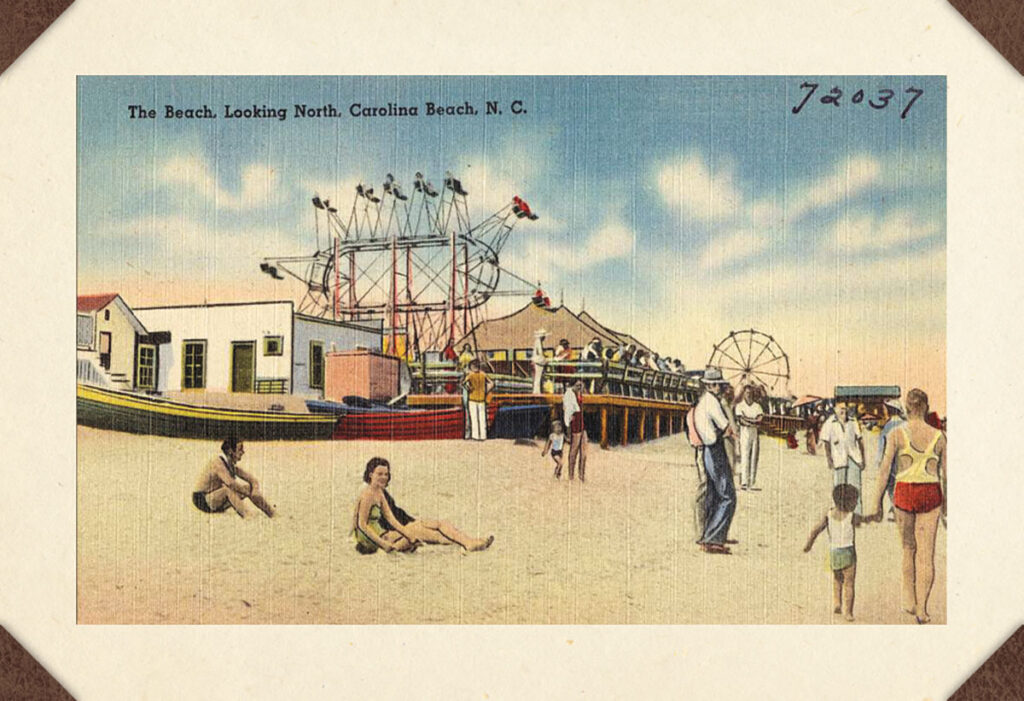

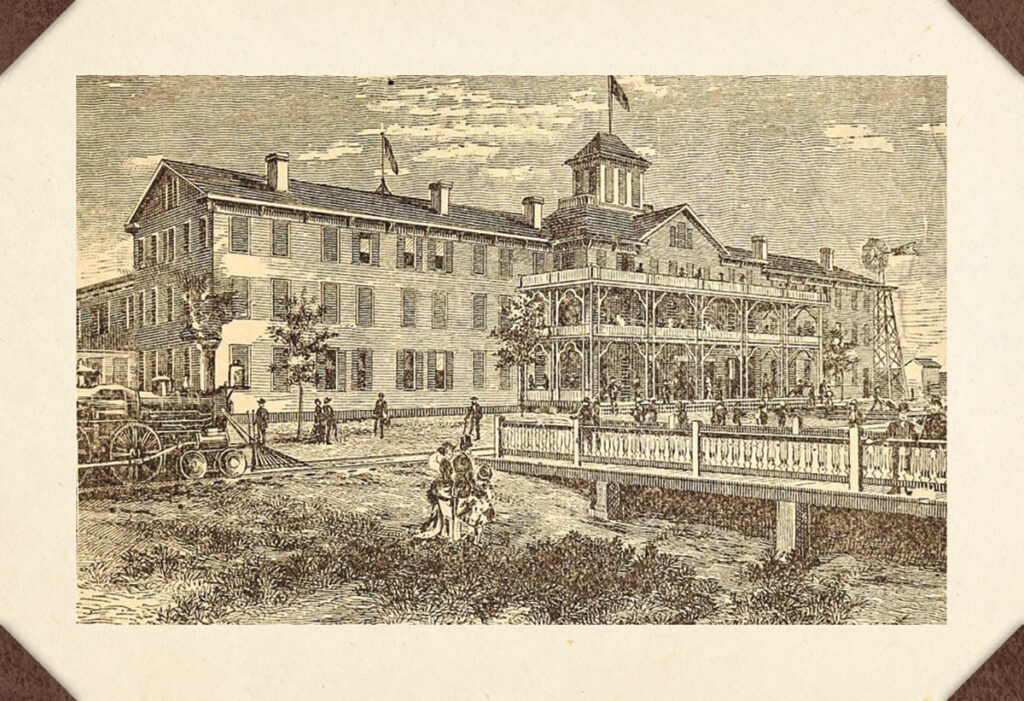
Segregation
Like every other aspect of Southern society in the early 1900s, North Carolina beaches were segregated by race. One of today’s state parks, Hammocks Beach, originated in a state-run effort to provide Black families with their own dedicated beach: Bear Island.
Long before Hammocks Beach became a state park, several other Black beaches during segregation were located just beside white beaches. A famous example was the Seabreeze resort on Freeman Beach at the northern tip of Pleasure Island, which was established in the 1920s and became known in the 1950s for its boogie and swing bands. A contemporary of Seabreeze, Shell Island Resort (near Wrightsville Beach) only lasted three years, but attracted thousands of Black visitors during its years of operation.
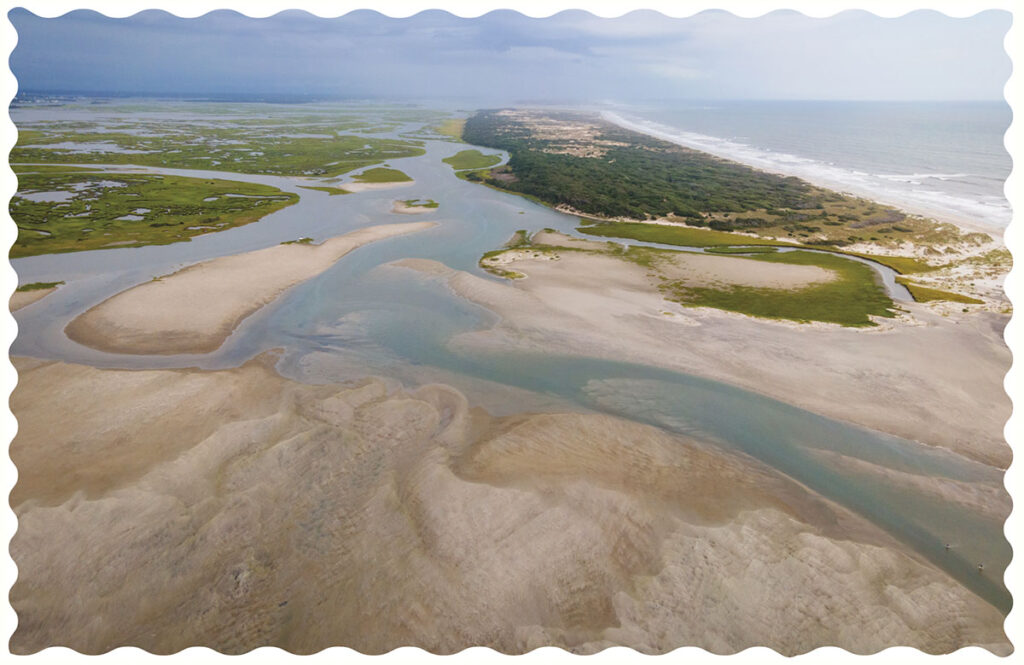


Changes Over Time
Some aspects of the North Carolina beach trip have changed in the past century. The most striking change was the integration of beaches in the 1960s. Many physical institutions of early 20th century beach life have also changed. The Atlantic Hotel burned down in 1933 and the Whalehead Club closed in the 1950s. The clubs, restaurants and nightlife that defined Freeman Beach and the Seabreeze resort have disappeared as well. Greater development of the coast has led to both loss of habitat and a subsequent increase in environmental awareness.
But much has stayed the same. Despite the loss of old clubs, hunting opportunities remain popular on the coast. Currituck County remains popular for hunters as well as the Down East region of Carteret County. Professional groups still hold conferences at beach hotels. And while most visitors take cars instead of trains, the sand and surf still welcome millions to come and relax on the shores of—arguably—North Carolina’s most famous asset.
To see a collection of vintage beach photos we didn’t have space to include in this article, please click this link.

